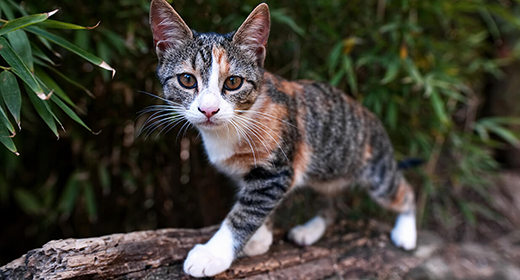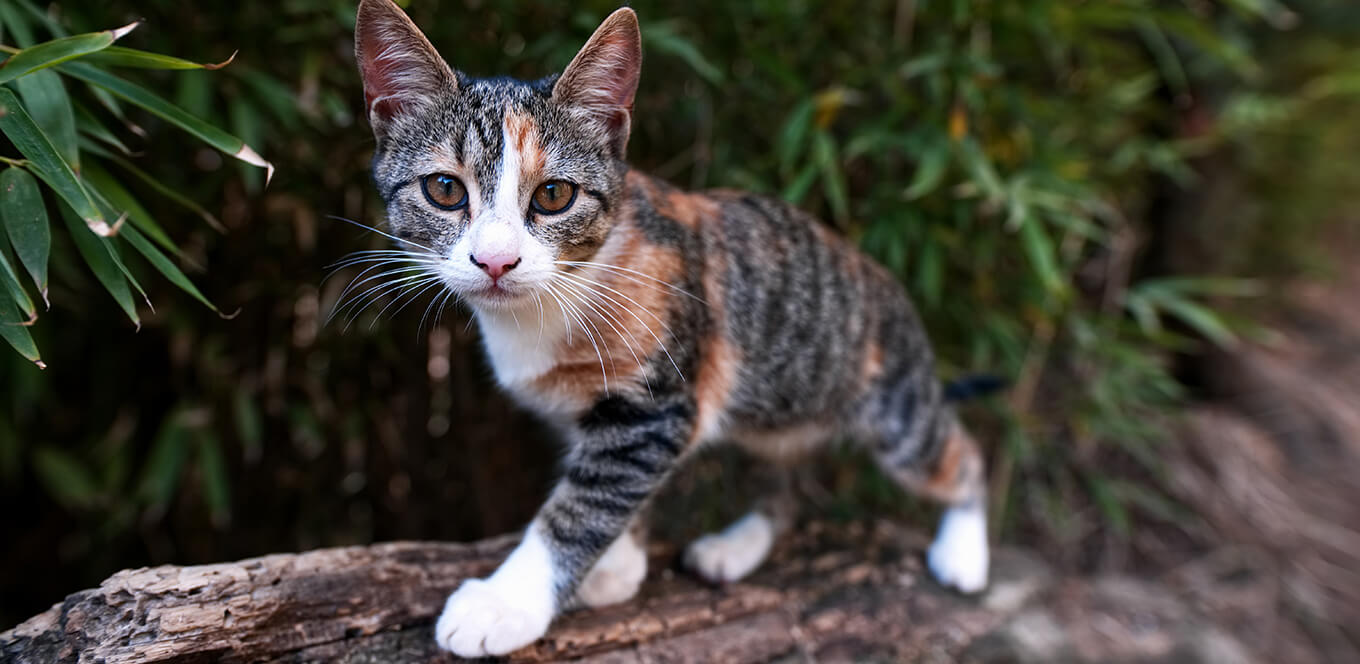

We include fish oil in IAMS™ dry kitten food to help promote healthy skin and a healthy coat in your kitten. Learn more about fish oil and meal, what it does, how it can help your kitten and why it is an important component in all IAMS dry kitten foods.
Fish oil is extracted from fish and is composed of special types of fats. Fish meal, which is used in IAMS dry kitten foods, is a good source of natural fish oil.
Fish oil from deep, cold-water fish contains omega-3 fatty acids. Fatty acids are a smaller component of fat, and omega-3 fatty acids are a type of fatty acid with important nutritional value. Fish oil has a unique fatty acid composition with high concentrations of long-chain omega-3 fatty acids, such as eicosapentaenoic acid (EPA) and docosahexaenoic acid (DHA).
The fatty acids in a kitten’s diet are incorporated into the body’s tissues and are critical for many body functions. For instance, animal cell membranes, including those in the skin, contain fatty acids. Omega-3 fatty acids are responsible for the production of substances that promote healthy skin conditions, especially when balanced with omega-6 fatty acids (found in common ingredients such as chicken fat and corn oil) in a ratio between 5:1 and 10:1.
All IAMS dry kitten foods, such as IAMS™ ProActive Health™ Healthy Kitten, contain fish oil as a high-quality source of omega-3 fatty acids.
Studies conducted by nutritionists at The IAMS Company found significant improvements in skin and coat when cats1 were fed a diet that contained omega-3 fatty acids in a balanced ratio with omega-6 fatty acids versus the same diet without the balanced ratio.
Feeding a complete and balanced diet with a balanced ratio of omega-6 and omega-3 fatty acids is proven to promote healthy skin and a shiny coat. When fed fish oil, cats showed:
1 Data on file, The IAMS Company, 2000.



Is your feline leaving puddles of urine in your bathtub or on your tile floors? Making lots (and lots) of trips to the litter box? Or crying out in pain when they pee?
Sounds like
tinkling trouble.
Your furry friend might have feline lower urinary tract disease (FLUTD), which is just scientific jargon for a collection of painful conditions that can wreak havoc on your kitty’s bladder and/or urethra.
Some of the most common FLUTD diseases include urinary tract infections, urinary stones caused by a buildup of minerals, obstructions within the urethra or an inflamed bladder.
Not drinking enough water
Not urinating often enough
A urine pH level that’s too high
Too many minerals and not enough water in the urine
Being a male cat — because their urethras are longer and narrower
Stress or anxiety
Keep your
eyes peeled for
peeing problems ...
The Opens a new window American Veterinary Medical Association says to watch for these major signs:
Straining to go
Frequently urinating a little at a time
Prolonged attempts to go
Crying out while urinating
Excessively licking their genital area
Peeing outside the litter box
Passing blood in their urine
Get your cat back
on the right tract.
First things first, if your feline seems to be in a lot of pain or isn’t able to pee at all, get to the vet — stat!
Your cat might have a urethral obstruction, a life-threatening condition that your veterinarian must treat quickly!
Seriously, don’t dillydally.
Feed smaller, more frequent meals.
Always provide your cat with clean, fresh water.
Encourage your feline to drink as much as possible to help keep mineral buildup at bay and flush your feline’s urinary system.
Be sure you have the right number of litter boxes — usually one more box than the number of cats you have.
Place litter boxes in quiet parts of the house.
Always keep litter boxes clean — they should be scooped once or twice a day.
Maintain a steady routine and make your home as stress-free as possible. Consider how your own stress level, any visiting house guests and any other pets might be affecting your cat.
Take this old adage to heart:
“An ounce of prevention is worth a pound of cure.”
In addition to the tips above, feed your cat delicious Opens a new window IAMS™ PROACTIVE HEALTH™ Urinary Tract Health, made with real chicken.
It helps promote your cat’s urinary system health by reducing urinary pH and helping to control mineral levels.
How’s that for
a win-win?!
We use a sodium salt to acidify urine and help prevent struvite crystals from forming.
Our formula helps control levels of calcium, magnesium and phosphorus in your cat’s urine, which is a good thing!
Next stop? Litter box bliss.
(Ahhhh.)

